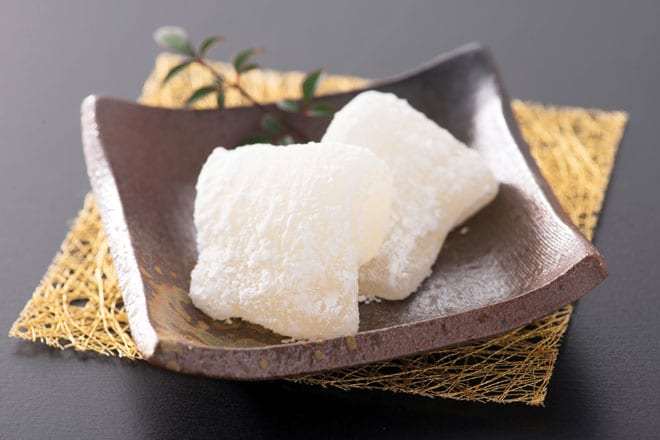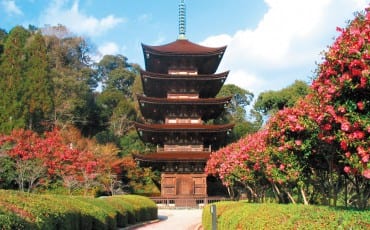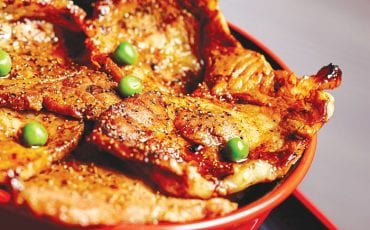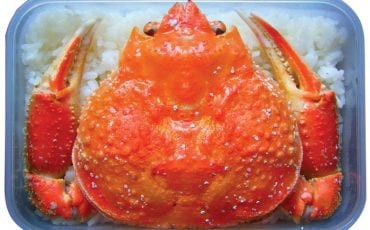- OISHII
- OISHII Wiki
- Dishes
- Habutae mochi
OISHII Wiki
Dishes
Habutae mochi

Also known as neri-mochi (kneaded mochi), this classic confection originates from Fukui Prefecture. Thin, smooth and white, these glutinous rice cakes have a sweet filling, and are so light and soft, they’ll melt in your mouth.
Its name comes from its super-smooth texture that’s a little reminiscent of silk. A habutae is a type of Japanese silk that Fukui—known as the textile kingdom with a long tradition of silk fabric manufacturing—is famous for. Habutae mochi has a history of more than 100 years as it originated with this textile industry.
With its delicate and smooth texture, habutae mochi exudes the same elegance and gracefulness as Habutae silk. Sink your teeth into this mochi confection, and you’ll find a beautifully soft and chewy texture. Taste-wise, habutae mochi is lightly sweetened and a perfect accompaniment with matcha or green tea.
So how is habutae mochi made? Sweet shops in Fukui first grind glutinous rice into a powder, then add hot water and knead the mixture with sugar and starch syrup. Like most kinds of mochi, it typically takes a long time to make, which is why it is such a treasured treat.
Fukui is also known for its high-quality rice, so it’s no wonder that habutae mochi is a great food souvenir of the region. These days, you can get habutae mochi in many different flavours, such as strawberry, chocolate, Japanese mugwort, and anko, a sweet paste made from azuki beans.









